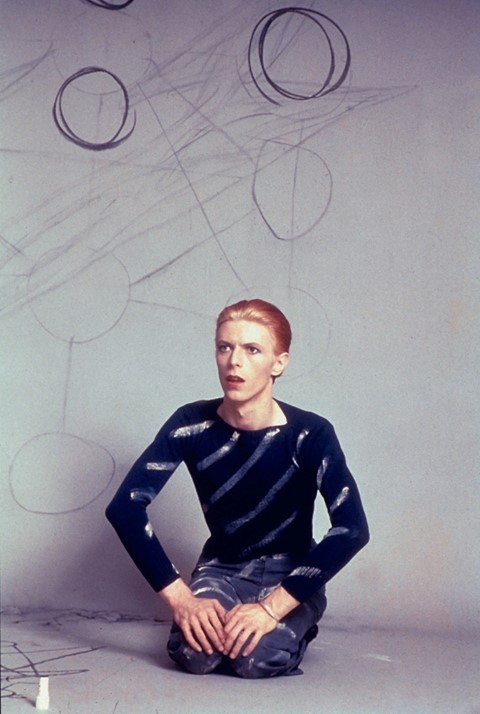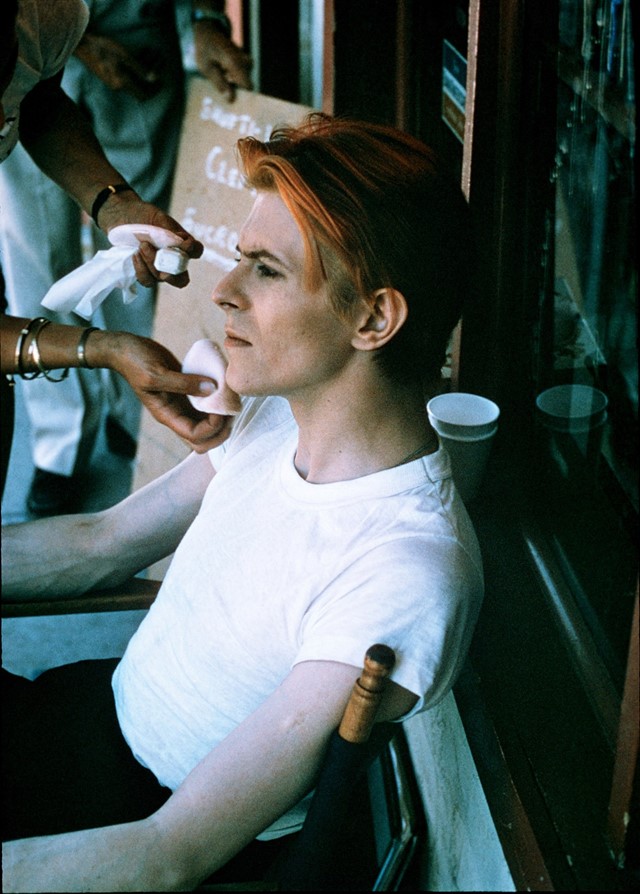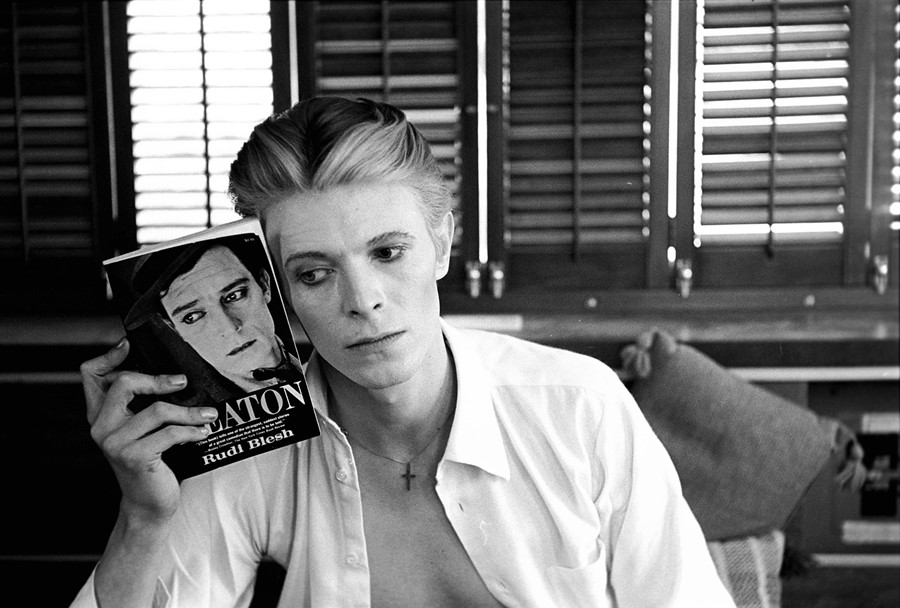Veteran photographer Steve Schapiro reveals the tale behind one of his most extraordinary images of David Bowie imitating his hero Buster Keaton
Feted American photographer Steve Schapiro first met David Bowie in 1975, when Bowie's manager Michael Lippman called him up and asked if he'd like to shoot the intergalactic star. "I said yes before he could finish the sentence," he chuckles into the receiver, speaking from his home in Chicago. Schapiro – by then a firmly established documentary photographer, whose clients included Life, Rolling Stone and Time – duly headed to the assigned Los Angeles studio, assistants in tow, and waited for Bowie to arrive. "We didn't know what to expect because we had this image of Ziggy Stardust and all the other characters [that he assumed] in our minds. But when he came, he was very simply dressed, very calm, over intelligent. We started talking, he found out that I had photographed Buster Keaton and Keaton was one of his heroes so we immediately became friends." Clearly at ease in Schapiro's presence, Bowie proceeded to borrow a blue crop top from one of the photographer's assistants and disappeared into another room. "He came out 20 minutes later and he had painted these white stripes on [the top] and his trousers," Schapiro recalls, "and he had also painted his toes white. Then he started drawing on the background paper and making these wide circles and slashes and of course, I kept wildly photographing."

What truly struck Schapiro at this first meeting was how experimental and chameleon-like Bowie proved to be, in a manner that set him apart from his rock'n'roll peers (many of whom Schapiro had previously photographed). "It seemed to be a shoot in which he was trying out different costumes or different attitudes or different personalities which he could then use in future videos and future songs. The beauty of David was that, whereas people like The Beatles or Mick Jagger have done fantastic and incredibly memorable music, they're always doing it as themselves. When Mick Jagger appears on the stage, he is basically the same as he always has been; his clothes might be slightly different, the background might be different, but he really is the same person. But with Bowie, it seems to me that he had this enormous sense of personal growth. He would create a character and then move onto something totally different and keep moving into different spheres."
Schapiro would go on to witness many more of Bowie's extraordinary performances, the singer and actor frequently enlisting him to capture his ever-evolving image. Many of these moments, including a tantalising number of previously unseen images, feature in the photographer's latest book Bowie By Steve Schapiro, published by powerHouse Books, a powerful testament to both Schapiro's discerning eye for colour, composition and timing as well as how truly unguarded Bowie felt in his presence. One of the most striking (and famous) images in the book shows Bowie holding up a Buster Keaton biography to his face, which he has set to precisely mirror that of the silent screen star as it gazes wistfully from the cover. "That was shot in his trailer on the set of [Nicolas Roeg's film] The Man Who Fell to Earth in New Mexico in 1975," Schapiro tells us. "Actors tend to work with people who they feel they can trust and who are easy to work with; the ones they feel aren't gonna get in their eye-line or make noises during the filming. We just had a good relationship and that's how it came about that I came to shoot during filming."

While it's tempting to think that Bowie had prepared this prop and pose just for Schapiro, who he knew had shot Keaton, the photographer does not believe that to be the case. "No, no, nothing that I did with David was pre-prepared," he says emphatically. "I think he just loved Buster Keaton and it was one of the books he had in his dressing room – in the background of the other pictures you can see Siddhartha by Herman Hesse, which was another book which he really liked. It was just a moment when he picked up the book and it happened spontaneously."
One thing Schapiro does concede, however, is that it was always Bowie who was in control of a shoot's direction. "All I did was bring his ideas and his images into daylight. With a lot of people I photograph, I really have to determine what we're doing, how we're doing it, what props we're using and things of that sort. With David, what you see is what he wanted to present." In this way, Schapiro feels that Bowie and his hero were very much alike: "Bowie and Keaton were both very brilliant. Keaton engineered all the stunts on his films himself – you know, things like the house falling down around him – all the things he did were things that he engineered and thought up himself, rather than having a film director saying 'I want you to do this or that.' They were alike in their visionary genius."
Bowie By Steve Schapiro is out now, published by powerHouse Books.
